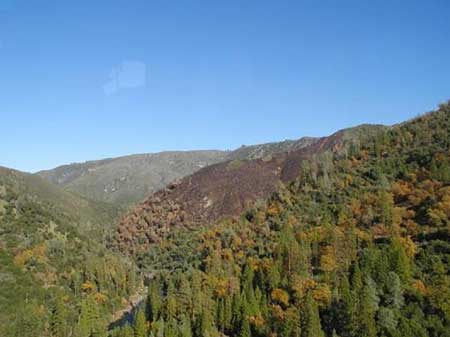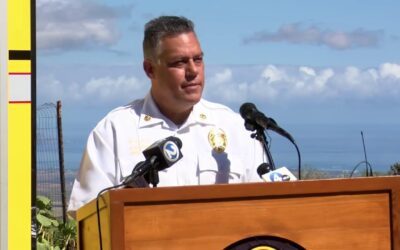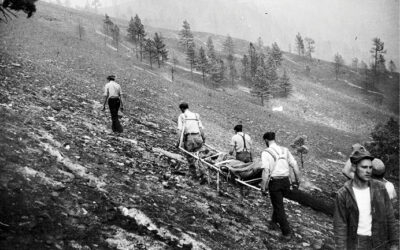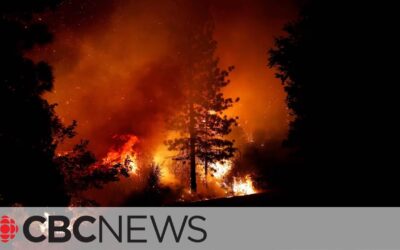Lessons learned from Sept. 12, 2004 tragedy

Incident scene (NIOSH photo)
On September 12, 2004, a 24-year-old female career fire fighter (the victim) died while conducting an initial attack at a wildland fire.
Read the Report
Career Helitack Fire Fighter Dies in Burnover During an Initial Attack at a Wildland Fire Operation
A Helitack crew responded in a helicopter to a wildland fire in a remote river drainage with slopes ranging from 80 to 120 percent. The crew began constructing an indirect downhill handline from a forest service road in an attempt to establish an anchor point at the river. A wind shift caused the fire to make an upslope run into the crew. Four crew members ran downhill toward the river while the victim and another fire fighter ran uphill toward another crew member standing on the road. The victim was overrun by fire and later pronounced dead at the scene.
NIOSH investigators concluded that, to minimize the risk of similar occurrences, fire departments and fire service agencies should:
ensure that crews are able to reach a safety zone(s) quickly when deciding to construct a downhill/indirect handline in steep terrain.
ensure that officers establish an initial attack plan that allows for the fire to be fought aggressively, but provides for the protection and safety of fire fighters first.
ensure that crews fully comply with “The Standard Fire Orders”.
ensure that individual crews establish Lookouts, Communications, Escape Routes and Safety Zones (LCES) prior to fighting the fire.
On September 12, 2004, a 24-year-old female career fire fighter (the victim) died while conducting an initial attack at a wildland fire. On September 14, 2004, the U.S. Fire Administration notified the National Institute for Occupational Safety and Health (NIOSH) of this incident.
On November 16-17, 2004, a Safety and Occupational Health Specialist and the Senior Investigator from the NIOSH Fire Fighter Fatality Investigation and Prevention Program investigated this incident. A meeting was conducted with the state agency representatives that included a conference call with two additional state agency representatives and a U.S. Forest Service (USFS) representative also investigating this incident. Interviews were conducted with the helicopter flight officers and a fire fighter involved in this incident.
On December 8, 2004, a phone interview was conducted with an additional fire fighter from the Helitack crew involved in this incident. The NIOSH investigators reviewed the training records for the victim and the crew members and the victim’s autopsy report and death certificate. NIOSH investigators also reviewed the department’s fireground standard operating procedures (SOPs) and the state agency’s incident report. The state agency unit involved in this incident is comprised of 138 permanent uniformed fire fighters and 140 seasonal fire fighters serving a population of approximately 103,500 in a geographical area of about 4,400 square miles.




